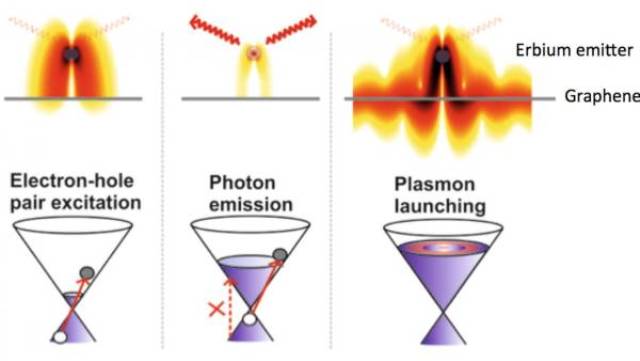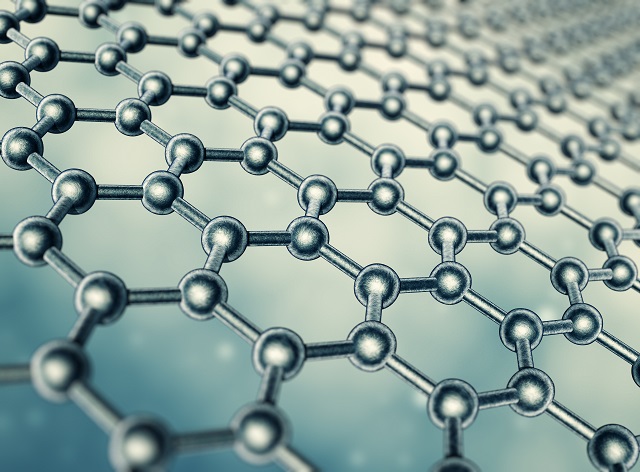 Illustration of the electrically controlled energy flow into photons and plasmons.
Illustration of the electrically controlled energy flow into photons and plasmons.
Scientists from ICFO, MIT, CNRS, CNISM and Graphenea have conducted a study on the active electrical control of energy flow from erbium ions into plasmons and photons.
Photon emission is the key principle used in devices such as LEDs, displays and lasers. The electrical control of light emission is a widely used phenomenon for sensor, display and optical communication applications. It also paves the way for new types of active plasmonics-based nano-photonics devices.
The study “Electrical control of optical emitter relaxation pathways enabled by graphene” was published in Nature Physics. It was carried out by positioning erbium emitters at a distance of few tens of a nanometre from a graphene sheet with an electrically-controlled carrier density (Fermi energy).
Erbium ions emit light at a wavelength of 1.5µm, commonly known as the third telecom window, which makes it ideal for optical amplifier applications. As there is very little loss of energy in this wavelength range, the window acts as an important parameter for optical telecommunications due to efficient information transmission.

Image Credit: Tatiana Shepeleva / Shutterstock.com
The research findings revealed that the flow of energy from erbium into plasmons or photons can be easily controlled with the application of a small electrical voltage. The graphene consists of distinct, strongly confined plasmons with a wavelength that is of magnitude smaller than the emitted photon wavelength by two orders.
Due to the gradual increase in the Fermi energy of the graphene sheet, the erbium emitters excites the electrons in the graphene sheet, causing them to emit plasmons or photons.
The experimental results proved that graphene plasmons operating at near-infrared wavelength are suitable for use in telecommunication applications.
In addition, the strong optical energy obtained from the resulting plasmons opens up a new platform in data storage and manipulation field, using active plasmonic networks.